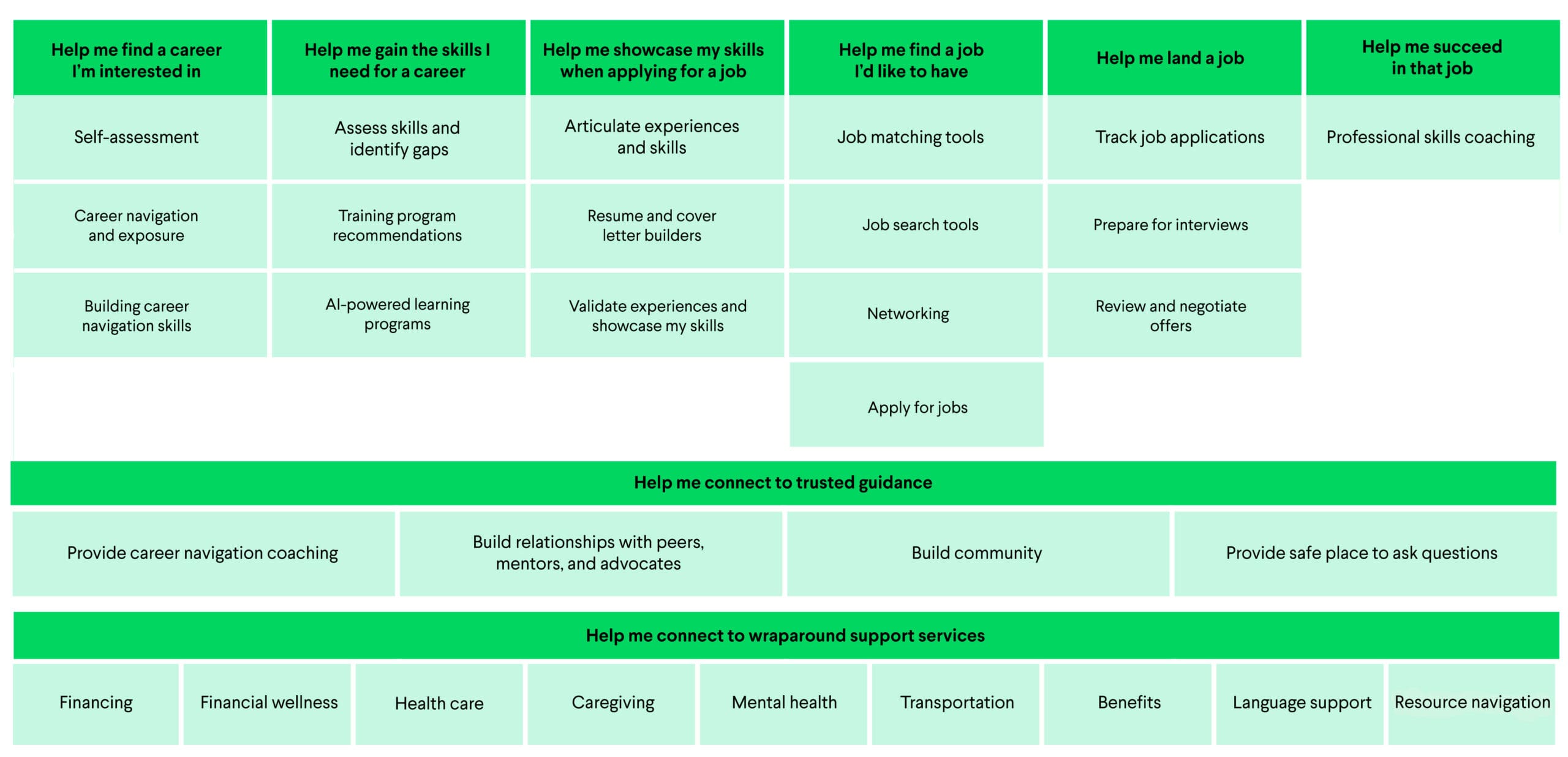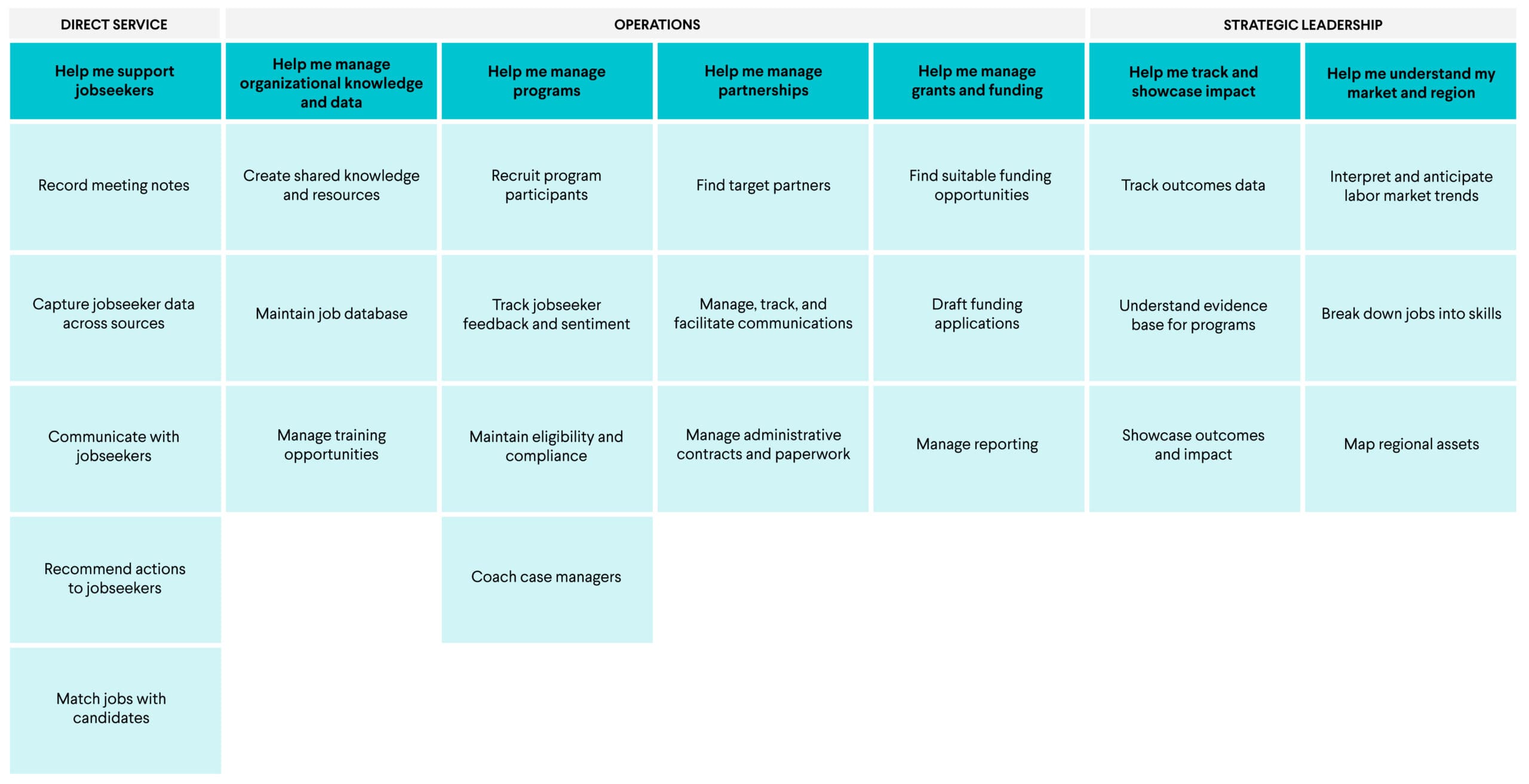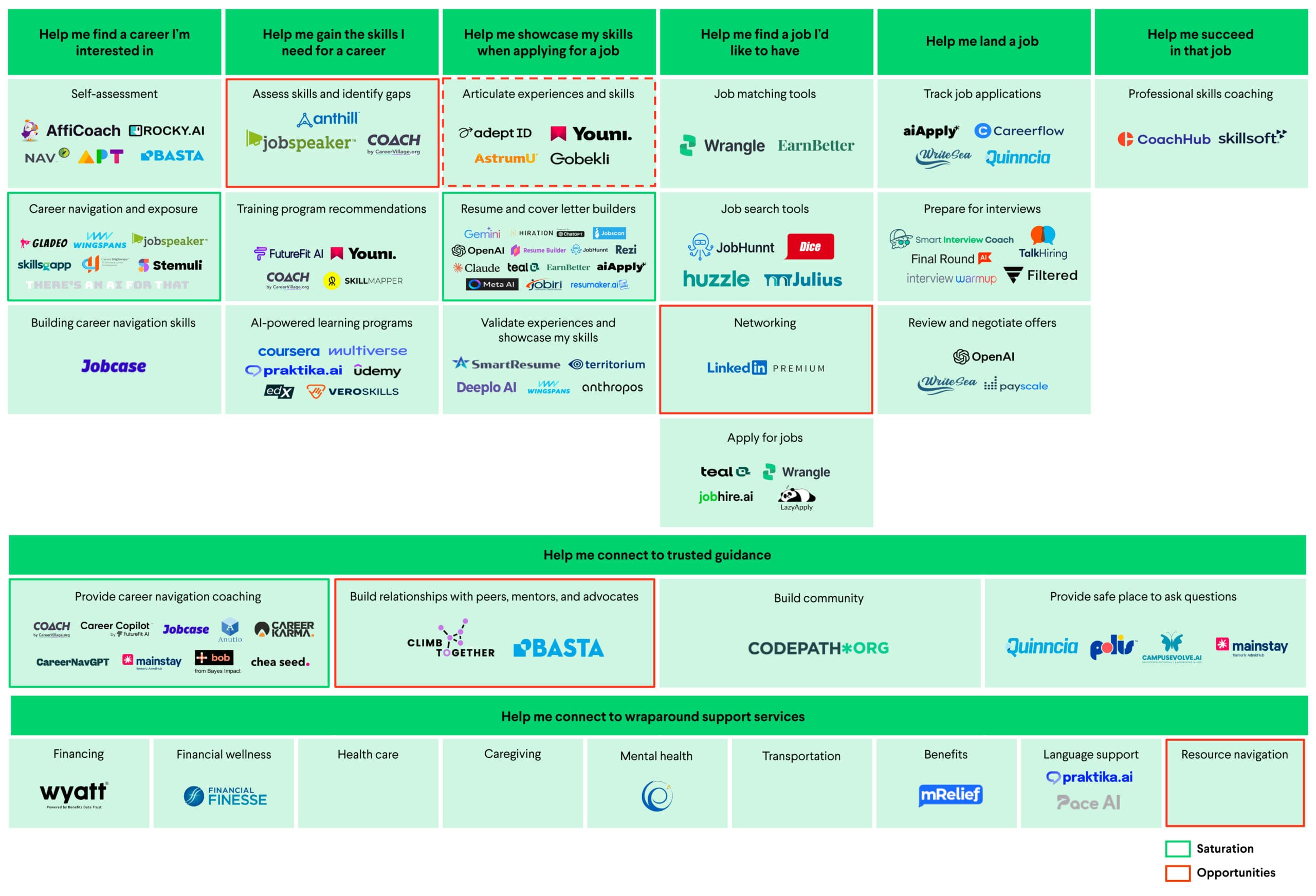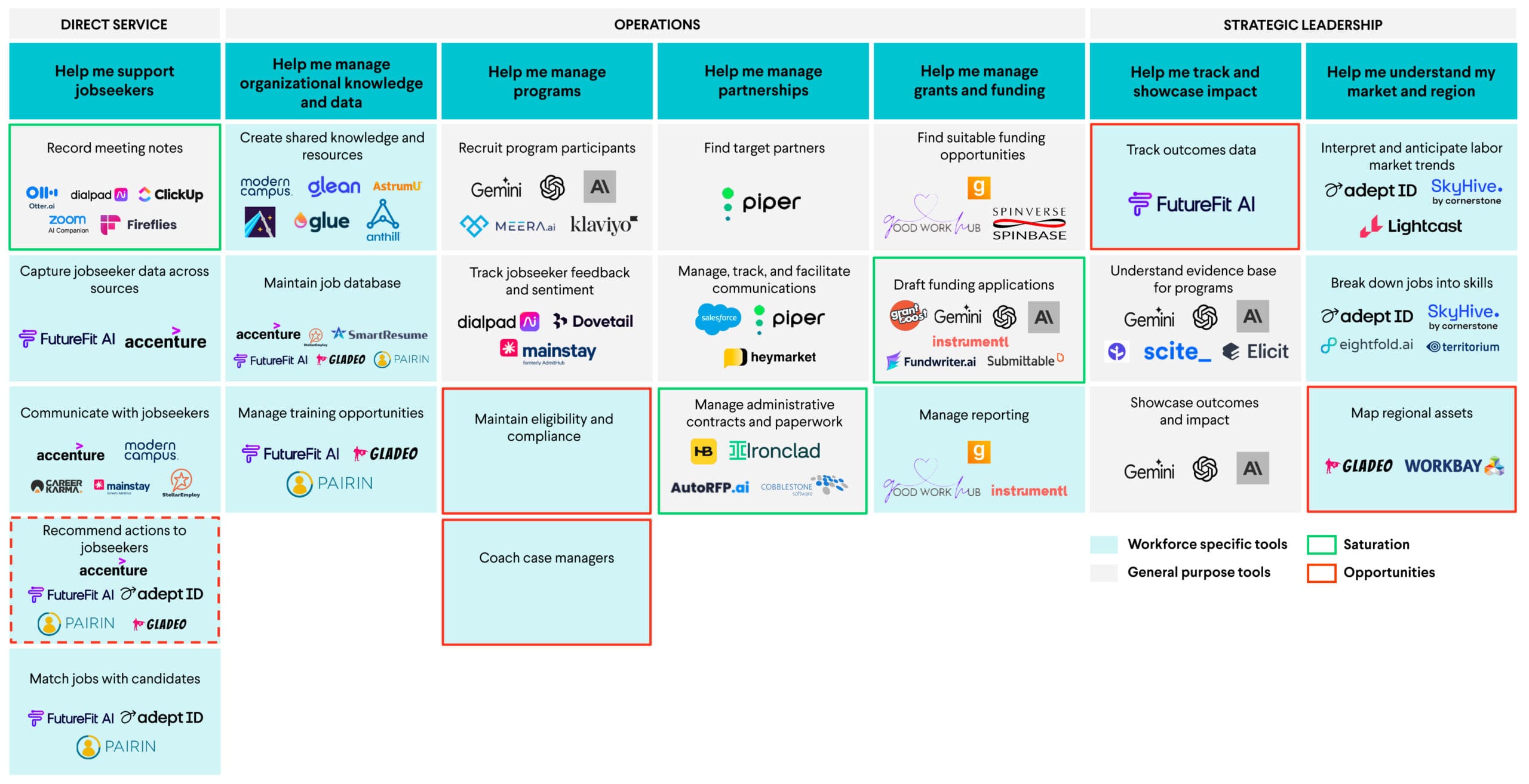Future State
With the explosive growth of generative AI tools over the past year and a half, one might assume that the technology has been adopted at an equally swift rate. However, we continue to hear from our stakeholders that generative AI tools remain in the early stages of adoption. In our interviews for this scan, stakeholders primarily identified use cases related to their day-to-day operations and incremental improvements in efficiency.
However, at the Center for Artificial Intelligence & the Future of Work, we are eager to move toward a future phase of adoption: having education and workforce professionals use generative AI to drive equitable economic advancement for all. We recognize that generative AI alone won’t resolve equity issues in workforce development. Collaboration and behavior change among employers, higher education institutions, and workforce organizations will be crucial. But we believe that generative AI has the potential to improve our collective impact.
In this future state, we envision that generative AI could:
- Facilitate human connection. Rather than replacing unique human interactions, generative AI could help us connect with others and improve the quality of those connections.
- Use data to drive equitable pathways to careers. By making data on available career opportunities more transparent and using inference to understand the skills needed to succeed in these pathways, generative AI could support the development of a true skills-based economy.
- Remove friction from career navigation. Generative AI could also address some of the challenges and stigmas associated with the job search process, such as accessing supportive services or understanding norms.
We acknowledge that integrating these use cases into the workforce development ecosystem requires more work. First, generative AI tool providers should co-design solutions with people from populations typically excluded from technology development to counteract the inherent biases and lack of data representation within large language models. Second, ensuring AI literacy and digital access is crucial in preventing a double digital divide, especially when advanced AI tools are accessible primarily through paid models. In addition, organizations need effective change management strategies to integrate AI, including employee upskilling and thoughtful AI integration practices.
We’re excited to see the learn and work ecosystem move toward the transformational use of generative AI in the future, and we’re eager to explore the opportunities and gaps we’ve identified in the market. As we continue this work, we aim to better understand the adoption and efficacy of existing tools, highlight innovators to watch, and incubate and test solutions in partnerships with organizations.
We invite you to offer feedback, push our thinking, and share other use cases and tools you have been using or hope to see. Please contact us if you would like to collaborate with us on this work.
Resources:










